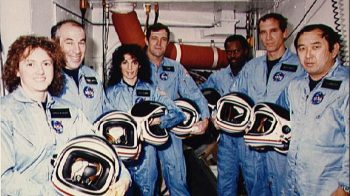
Supplying the astronauts on the ISS isn’t cheap. Here’s a glimpse at what it involves.
Supplying the astronauts on the ISS isn’t cheap. Here’s a glimpse at what it involves.

Two NASA astronauts remain on the International Space Station as Boeing works through issues with its Starliner spaceship, which was scheduled to take them home in June.
The ISS is a partnership of over a dozen national groups, including the U.S., Russia, and the European Space Agency. And it isn’t cheap to keep the station up and running.
Ever find yourself orbiting hundreds of miles above Earth, hankering for tacos?
“Every time you want to eat a tortilla on the space station, someone has to package it, put it into a spaceship, launch it into space, and then dock with this football field-sized spaceship,” said Casey Dreier, chief of space policy at the Planetary Society.
NASA spends $3.1 billion on the station each year, mostly for transporting crew and cargo like food. “So that’s one very expensive tortilla,” said Dreier.
The U.S. is the station’s biggest funder, but other countries pitch in too. Companies can send their own missions to the space station — if they pay NASA $10 million for hardware and personnel support. But the ISS is nearing the end of its working life. And that brings new costs, noted Henry Hertzfeld, research professor of space and international affairs at George Washington University.
“Congress approved extra money to pay for de-orbiting it safely and fall into the Pacific Ocean,” he said.
That’s slated to happen around 2030.
There’s a lot happening in the world. Through it all, Marketplace is here for you.
You rely on Marketplace to break down the world’s events and tell you how it affects you in a fact-based, approachable way. We rely on your financial support to keep making that possible.
Your donation today powers the independent journalism that you rely on. For just $5/month, you can help sustain Marketplace so we can keep reporting on the things that matter to you.

















